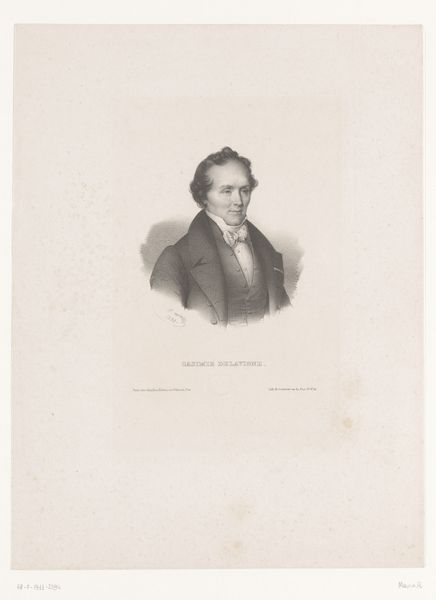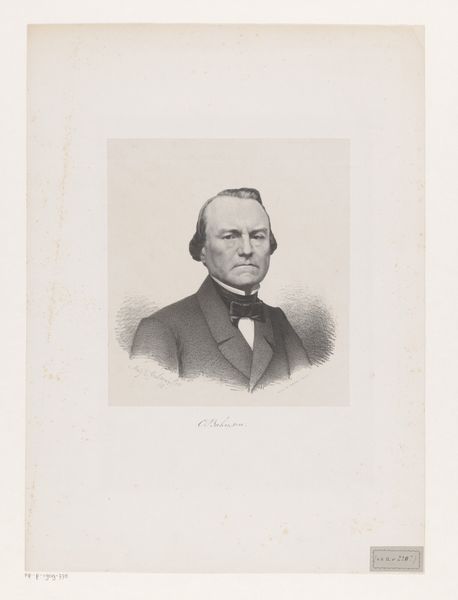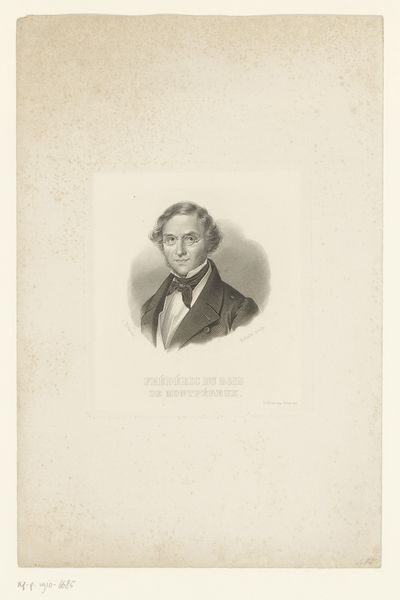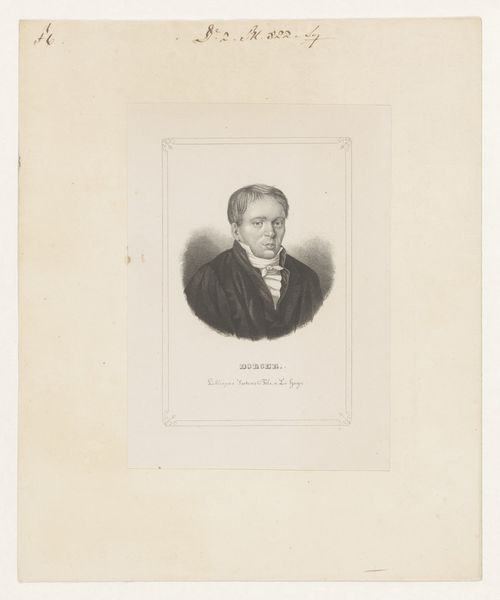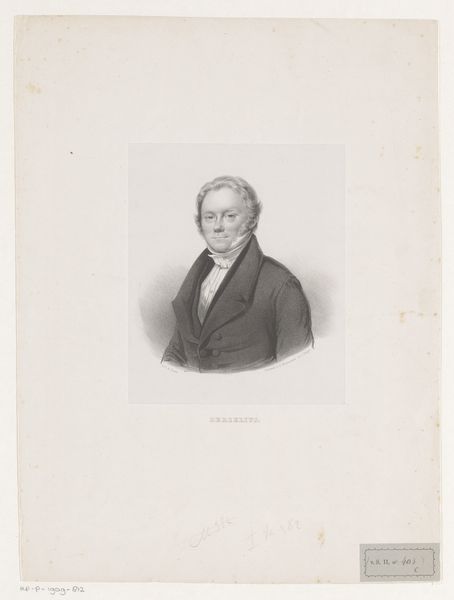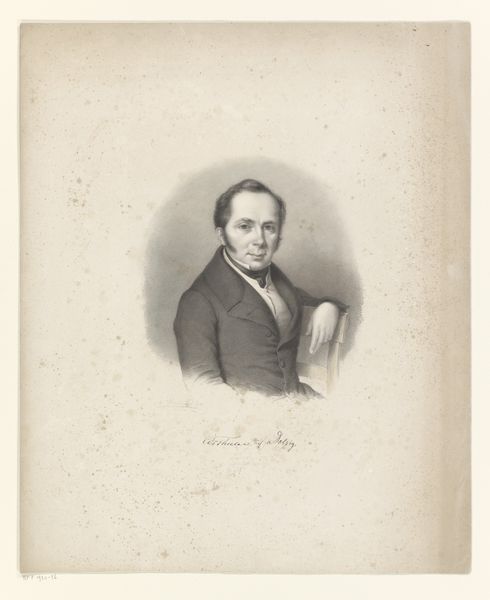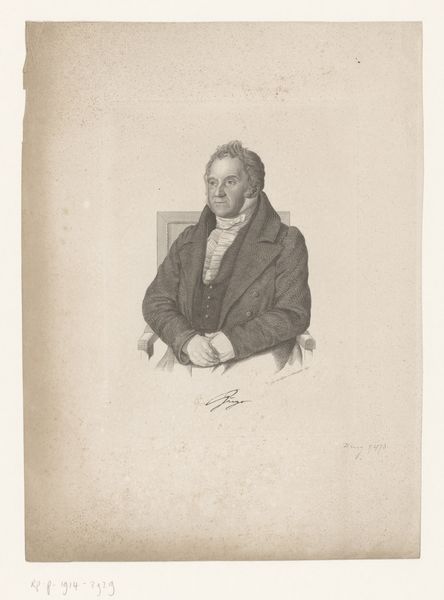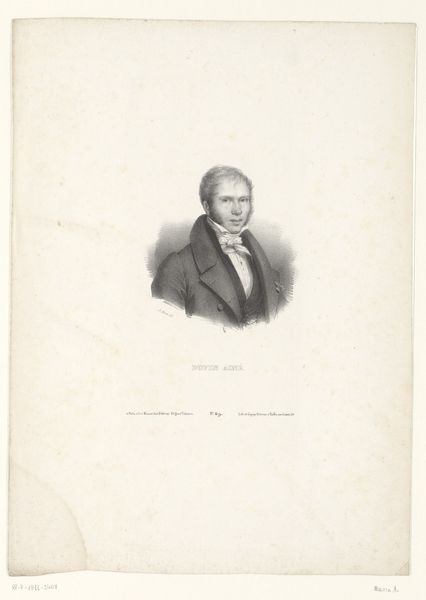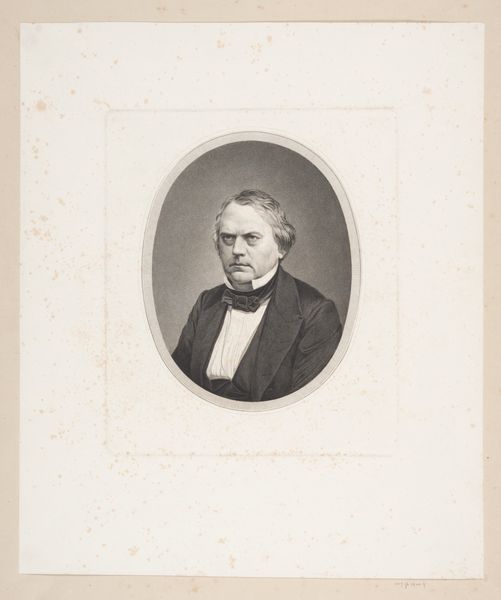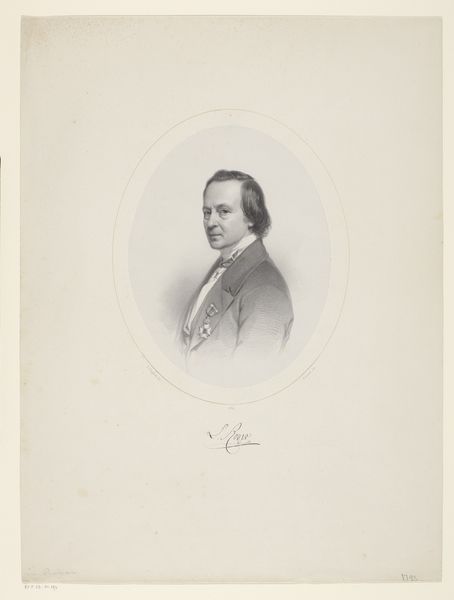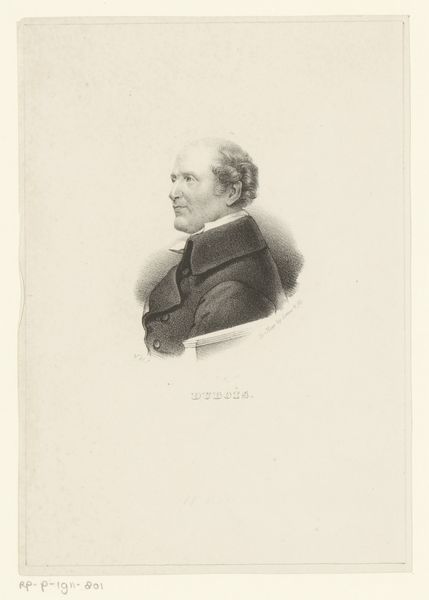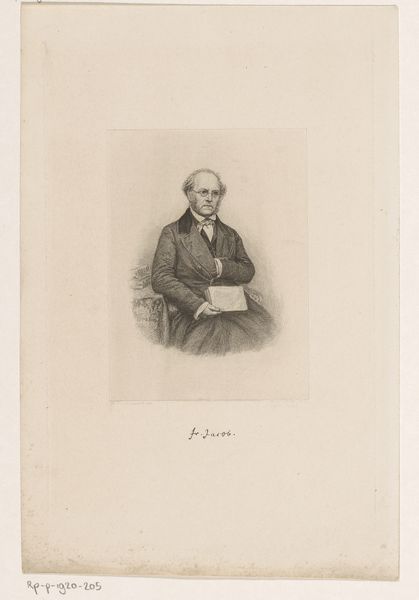
drawing, graphite
#
portrait
#
pencil drawn
#
drawing
#
pencil sketch
#
pencil drawing
#
romanticism
#
graphite
#
realism
Dimensions: height 177 mm, width 120 mm
Copyright: Rijks Museum: Open Domain
Editor: So, this is Franz Xaver Stöber's "Portret van Karl Immermann," a graphite drawing from between 1835 and 1858, currently residing in the Rijksmuseum. There's a certain... stillness to it. Almost like a photograph, yet it’s rendered so softly. What can you tell me about this piece? Curator: The choice of graphite for this portrait tells us a lot. In the 19th century, while oil paint secured commissions for the wealthy elite, drawing, with its affordability and accessibility, often served a different purpose. It captured the rising middle class, the intellectuals, and, as in this case, prominent writers like Karl Immermann. It suggests a burgeoning public sphere where images of cultural figures were circulated, contributing to a sense of shared national identity. Editor: That's fascinating! So it wasn't just about likeness, but about creating a publicly recognizable figure? Curator: Precisely. Consider where this drawing might have been displayed. Not just in a private collection, perhaps, but reproduced in literary magazines or even as prints sold to the public. This accessibility democratized the image of Immermann, bringing him closer to his readership and solidifying his position within German cultural life. Notice the direct gaze of the subject. What impression do you think it aims to convey? Editor: Hmm, authority, perhaps, but also intelligence. He seems like someone of substance that would carry cultural significance. I hadn’t considered that drawings could serve such a crucial public function at that time. Curator: They were powerful tools for shaping public perception and celebrating intellectual achievement. This drawing participates in the construction of Immermann's legacy. Understanding that context is crucial to understanding the work's significance beyond its aesthetic qualities. Editor: That adds a whole new layer of meaning for me. It makes me appreciate not just the artist’s skill, but also the drawing’s role in a larger cultural landscape. Thanks!
Comments
No comments
Be the first to comment and join the conversation on the ultimate creative platform.
